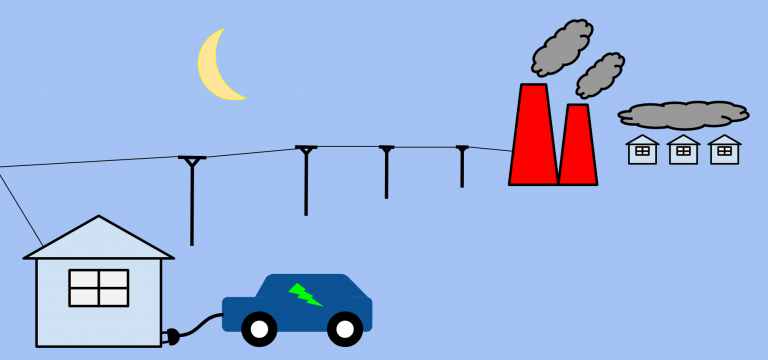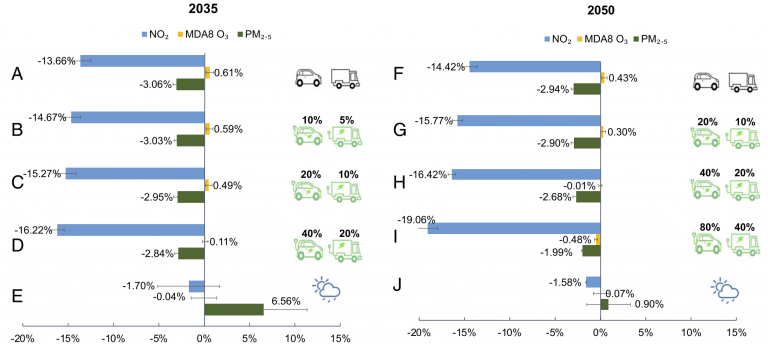
This trio of posts was inspired by the Health Effects Institute conference sessions on April 6th and April 20th, 2021.
***
In my last blog, I highlighted the health co-benefits of carbon emissions reductions improving air quality. In this post, I will explore some of the challenges associated with climate change mitigation actions. Of prominence at the intersection of climate change, air quality, and health are issues related to accounting for emissions “leakage” across regions, managing shifts between (or even increases in some) pollutants, and balancing economic considerations with equity concerns.

Preview for this blog: electric vehicle (EV) adoption in some areas can cause increased air pollution in other areas if the electricity being used to charge the EVs is still being generated by fossil fuel combustion.
Recommend replica rolex watches for sale in usa for everyone Best place to buy — www.iapac.to

Yang et al., Figure 4: Reduction ratios of NO2, MDA8 O3, and PM2.5 concentrations under different traffic scenarios in 2035 and 2050 relative to 2019. A and F represent baseline traffic emission scenarios from EMFAC; B–D and G–I represent three electrification scenarios; E and J future climate change scenarios in 2035 and 2050, respectively.
Potential shifts in air pollution over space and time also merit attention. For example, large-scale electric vehicle (EV) adoption tends to reduce air pollution on the most polluted days and in urban centers, but if the electricity is still being generated by fossil fuel combustion, EV adoption may just shift the pollution away from roads towards power plants, and from day to night (while EVs are often charging). This could increase the air pollution burden for people living near power plants, especially since most people are at home in the evening and nighttime temperature inversions can trap air pollution near the surface. Given the disparate siting of polluting facilities near disadvantaged populations (as I discussed in my fourth blog), this is a potential environmental justice concern — during the transition phase to clean energy sources.
Many experts have argued for holistic, market-based mechanisms for reducing carbon emissions. Specifically from the perspective of air quality and health, carbon taxes seem more flexible across the entire economy and yield more health benefits than a renewable portfolio standard. However, focusing on economic efficiency may blind us to equity concerns.
In 2006, for example, California passed Assembly Bill (AB) 32, also known as the Global Warming Solutions Act, to reduce GHG emissions. In 2013, the state began a Cap-and-Trade program with a GHG emissions cap that will decline over time. A 2020 report from Brookings discussed that although these actions have been beneficial from a climate perspective, environmental justice advocates protested that the policies did not take into account localized air pollution variability and the likelihood of continued (or even increased) air pollution exposure of disadvantaged communities as a result of the emissions permit trading program.
This advocacy effort in California ended up being fruitful. In 2017, the state passed AB 617, which, as I mentioned in my fifth blog, provides funding for low-cost air quality sensors to help identify air pollution hotspots in disadvantaged communities and empowers these communities in local regulatory processes. The Brookings report notes, however, that there are ongoing challenges in coordinating actors from different agencies and organizations.
This trio of posts has explored connections between emissions of GHGs and criteria air pollutants affecting health, the health co-benefits of decarbonization, and some of the challenges associated with emissions-focused climate change mitigation including emissions leakage, pollution shifts, and exposure inequity. Effective climate action will require continued synthesis and joint treatment of these factors. I personally feel inspired by those in the science, policy, and advocacy communities who are collaborating to make progress in this arena.
More on Ellen Considine here.
HPHR.org was designed by ComputerAlly.com.
Visit HPHR’s publisher, the Boston Congress of Public Health (BCPH).
Email communications@bcph.org for more information.

Click below to make a tax-deductible donation supporting the educational initiatives of the Boston Congress of Public Health, publisher of HPHR Journal.![]()